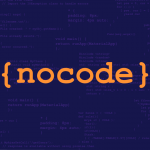Launching a Minimum Viable Product (MVP) is both an exciting and nerve-wracking milestone for entrepreneurs and developers alike. It’s the first step toward turning a great idea into a real, tangible product that users can interact with, test, and give feedback on. But amid the rush to get your MVP out the door, it’s surprisingly easy to fall into traps that can lead to future headaches—most notably, accumulating technical debt. In this article, we’ll explore some common mistakes made during MVP planning and how you can steer clear of them, ensuring your project is built on a strong, scalable foundation right from the start.
Understanding the Pitfalls of Rushing Your MVP: How Skipping Proper Planning Leads to a Mountain of Technical Debt
Think of your MVP as the house’s foundation. You might be eager to just lay bricks and see a structure emerge, but if you skip the detailed planning, you risk building on unstable ground. The same applies to software development: rushing into coding without a clear plan often results in shortcuts or quick fixes—what we call technical debt.
What is technical debt?
It’s the set of design shortcuts or impromptu solutions that solve immediate problems but make future development more challenging. These include poorly structured code, inconsistent architecture, or choices of technologies that don’t scale well. Like unpaid interest on a loan, technical debt accumulates over time, making every change more difficult and expensive. Eventually, it can hinder your product’s stability, slow down new feature development, and inflate maintenance costs.
Why does this happen?
Most entrepreneurs and even seasoned developers are tempted to prioritize shipping over planning—after all, speed is often seen as a competitive advantage. But this approach often results in building a fragile foundation that requires costly rewrites or refactoring later. If you don’t define your core architecture, pick appropriate technologies, and set standards early, you’ll likely face a mountain of technical debt that hampers growth.
How can you avoid this?
- Start with a clear blueprint. Define what your MVP must do, what can wait, and what should be built with scalability and maintainability in mind.
- Focus on creating a solid core architecture aligned with your product goals.
- Choose an appropriate tech stack that can handle future growth—not just what’s quick or familiar.
- Establish coding standards and document decisions.
- Remember, your MVP is the foundation—invest the time now to save headaches later.
Taking the time for proper planning upfront might seem like a slowdown, but it’s actually a strategy to accelerate future development and reduce costs.
The Do’s and Don’ts of MVP Tech Stack and Architecture Decisions: Making Choices that Keep Your Future in Mind
Your choices about the tech stack and architecture aren’t just technical details—they’re strategic decisions that can impact your product’s success for years to come. It’s tempting to pick familiar tools or the latest trendy frameworks just to get something working fast. But these shortcuts can lead to a tangle of technical debt that impedes progress.
Here’s what to keep in mind:
Do: Select a Scalable and Flexible Tech Stack
Your technology choices should serve both your current needs and future growth. For example, if you’re building a social app, pick a database that handles scale well—like PostgreSQL or MongoDB—rather than going with something less proven just because it’s easier or trendy. Look for tools supported by strong communities, good documentation, and proven track records.
Don’t: Get Carried Away with Over-Engineering
While it’s important to plan for the future, avoid the trap of premature optimization. Building a highly modular, complex architecture too early can slow you down and add unnecessary complexity. Focus on getting a working version first; then, evolve your architecture as your product matures.
Do: Emphasize Modularity and Decoupling
Design your MVP with loosely coupled components. This means building parts of your system that can be modified or swapped without affecting the whole. A modular approach simplifies upgrades, feature additions, and bug fixes, thereby reducing technical debt.
Don’t: Overlook Coding Standards and Documentation
Consistent coding standards and documenting your architecture from the start save headaches down the line—especially if your team grows or if you bring in new developers. Clear documentation explains why certain decisions were made and how the system works, reducing the risk of chaos and poor practices.
Do: Keep It Lean
Opt for a simple, functional prototype first. Over-engineering or trying to solve every possible problem upfront often leads to unnecessary complexity. Focus on delivering core value, then refine your architecture as user feedback comes in.
Wrapping Up: Why Smart Planning Pays Off
The biggest lesson here is that investing time and effort into proper planning at the beginning is a smart move. It might feel slower initially, but it pays off by avoiding a mountain of technical debt later. A well-thought-out architecture, scalable tech stack, and disciplined practices help ensure your MVP can evolve without constant rework, excessive bugs, or spiraling costs.
Remember, your MVP is the foundation of your product’s future. Doing it right from the start means less technical debt, fewer headaches, and a smoother path toward growth. So, take the time to plan, choose wisely, and build smart—your future self will thank you.
In conclusion:
Avoid the temptation to rush your MVP. Instead, focus on strategic planning, sensible technology choices, and maintainable architecture. This approach not only reduces technical debt but also sets you up for long-term success. After all, a strong foundation is the key to a resilient, scalable product.
Happy building!










